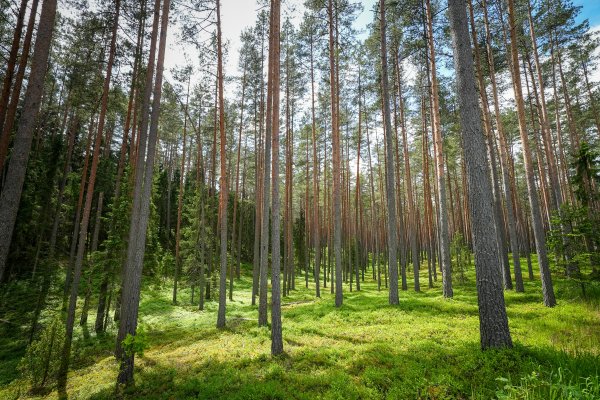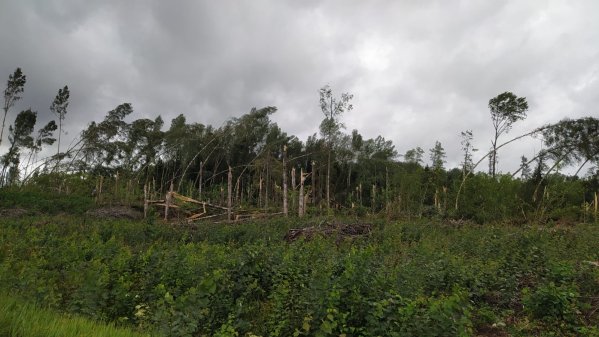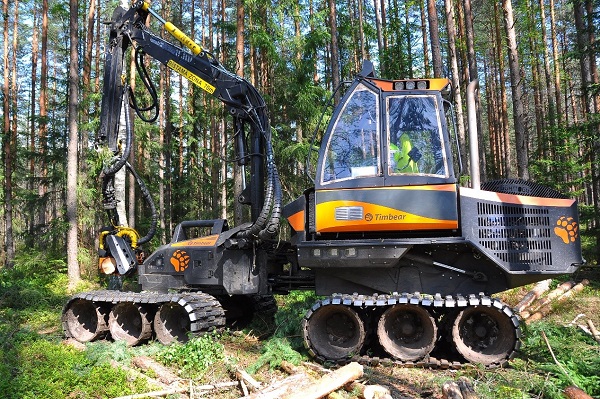Forest Stands are Vital also during the Times of Climate Change
Climate change is a continuous process that affects processes taking place in the forest in the most direct way, forcing forest management practices to adapt to the changes. JSC “Latvia's State Forests” (LVM) has been conducting research for more than 10 years, learning the effects of climate change and looking for adaptation solutions.
It is already known how the weather will change in the next 50-100 years. To preserve the vitality, productivity, and quality of Latvia’s state forests under the influence of climate change, LVM is already carrying out a series of different forest management measures.
Weather forecast until the end of the 21st century
Already back in 2010, on the order of LVM, the Latvian State Forestry Institute “Silava” in cooperation with the University of Latvia prepared a climate forecast for the middle and end of this century. This forecast shows that, for example, at the end of the century, spring will come half a month earlier in Dobele, summer will be two months longer, hotter and drier, there will be beautiful springs, while autumn will be later and rainier, and winter will be three months shorter. In Latvia, in general, the vegetation period, which plants use for their growth and development, will be extended from 35 to 80 days, depending on the climate change scenario and the region of the country (east, west). In theory, this means that the trees will be able to grow longer and produce more wood.
During the mentioned research, the future climate parameters that will prevail in the territory of Latvia at the end of the 21st century were identified. To model the potential conditions, the risks resulting from them and to search for effective solutions, within the framework of the same study, regions in Europe were identified, in which the climate already corresponds to the one predicted in Latvia in the future. These regions are central and southern Poland, western Germany and Luxembourg, as well as the south-eastern regions of the Netherlands and Belgium. Therefore, it is clearly known what problems there are in certain regions with pests, storms and precipitation, which can potentially be expected in Latvia as well.
Trees are more productive but also more endangered
Having characterized the impact of the future climate on the three most common forest tree species, it was concluded that pine stands will be up to 30% more productive in the middle age. The previous negative wind will remain in most of the country, but an increased risk is possible in the south-west of Latvia.
On the other hand, birch groves will be up to 10 % more productive in their middle age. The impact of the wind on birch groves will also remain at the current level. Risks of re-injury will increase for all species, especially in eastern regions.
“Evaluating the predicted threats of wind damage, it can be concluded that Kurzeme regions will be more exposed to them, which is why a different management regime should be considered to reduce the damage caused by storms. Scientists recommend paying special attention to the tending of young trees, strengthening the individual wind resistance of each tree, as well as managing the stands according to the target diameter. In the last decade, LVM has been paying special attention to the sanitary felling, because the vitality, productivity and quality of the future stand will depend on its quality and timeliness of execution,” says Aigars Dudelis, Head of LVM Forestry Planning.
More pronounced drought and heavier rains
The volume of precipitation in Latvia will not change significantly, but there will be more pronounced periods of drought and stronger rains, which makes us think about the effectiveness of drainage systems and the choice of species in reforestation in hilly areas. Deciduous trees are well suited for these conditions, as they are more resistant to drought stress – deciduous trees are able to reduce the volume of foliage in drought and restore it later during the vegetation period.
At the same time, it is predicted that the risk of fire in forests will significantly increase due to drought periods. Already in the last few years, during longer periods of drought, we experience forest fires more and more often in Latvia; therefore, considering future forecasts, LVM already initiated changes in the regulatory acts in the first decade of its operation, defining more precise criteria for the planning and implementation of preventive measures. During these years, a firefighting system with the ability to respond quickly was created, providing adequate inventory, equipment, and employee training.
Shorter frost periods
The frost period, which will become shorter in the future, will increase the risks of soil damage, which in turn complicates logging operations; therefore, in the future, logging equipment should not only maintain, but also increase mechanical strength and become lighter, and other effective solutions should be sought to reduce soil damage, such as damage to tree roots for reduction by performing a maintenance cut. These risks are already being mitigated in LVM's operation by sorting cuttings according to the complexity of development and testing tractor equipment equipped with caterpillar tracks.
Various types of caterpillar tracks have been tried in several pilot areas, the most suitable of which are used for wheeled tractors to reduce soil damage. Also, the company has developed digital tools for a more rational placement of technological corridors, identifying pedestrian areas that should be avoided when planning logging works, as well as other solutions. The manufacturers of logging equipment are also busy with the search for solutions to the challenges caused by various climate changes, thinking about how to maintain their competitiveness by offering better and more suitable equipment to the market.





